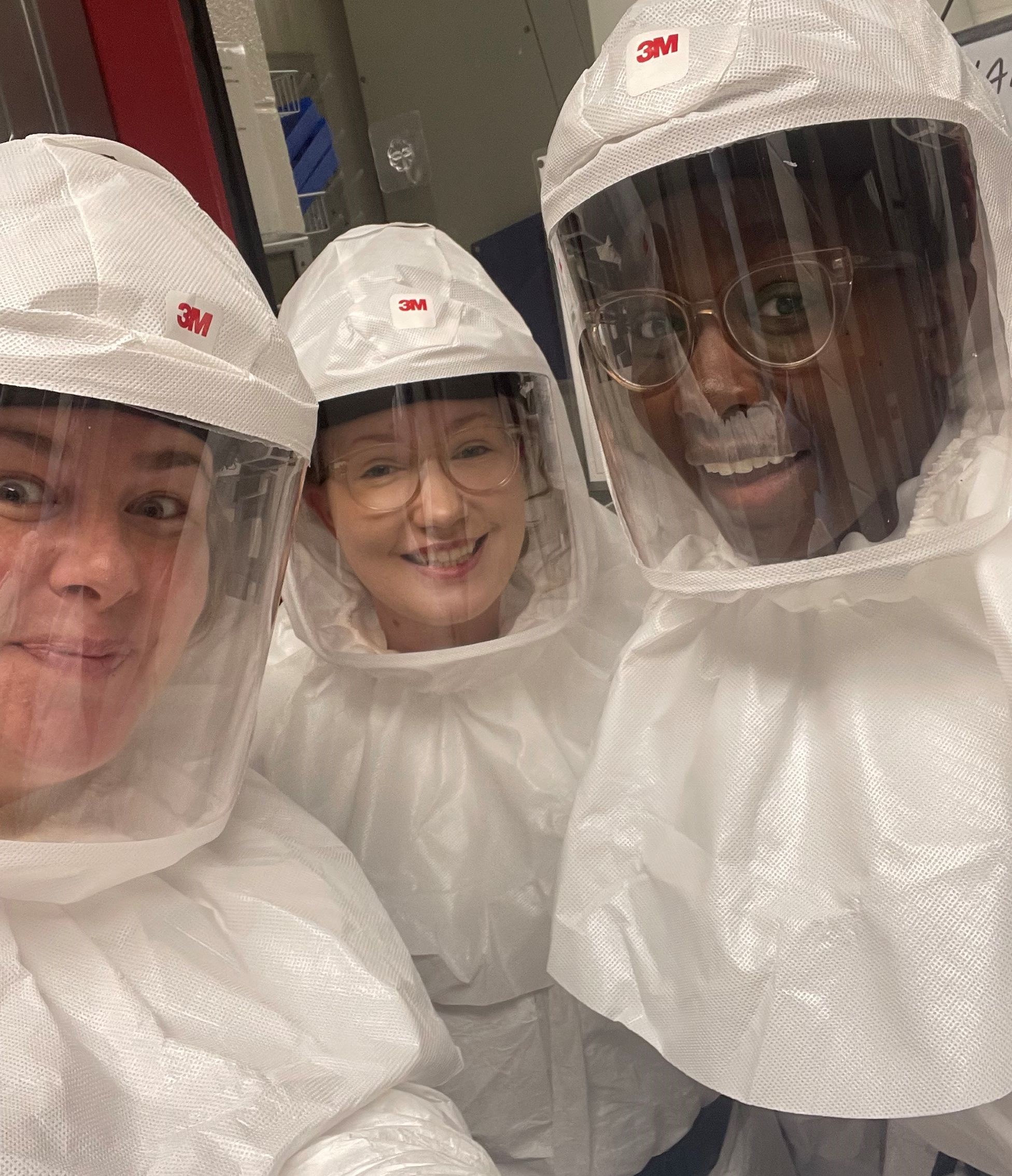Dr Clare Smith’s face is beaming. She’s standing in front of a small silver plaque fastened to a white brick wall.
Underneath the name of her department, Molecular Genetics and Microbiology, are two words that signal the start of a new chapter in her medical research career: Smith Lab.
It’s January 2020, the start of her new role as Assistant Professor and Principal Investigator of a mammalian genetics and infectious disease lab that bears her surname at Duke University in North Carolina.
Even though her team is charged with investigating the host and pathogen genetics underlying tuberculosis (TB), a new respiratory illness, caused by a virus, has emerged.
“I was a new Professor, building my lab from scratch, when the pandemic began and the shutdowns occurred, but because my lab is trained for high-containment biosafety work with dangerous pathogens, people looked to us to help lead the COVID-19 research effort,” Smith said.

“My team and I leapt into action and I spent my first year training and working with virologists on COVID-19 in moonsuits in our lab; it was an amazing experience to contribute to understanding a deadly new virus that was impacting the world.”
Smith has now switched her focus back to TB, a disease that killed more than 1.6 million people in 2021. It is the greatest killer of humankind over history.
Her lab specialises in investigating interactions between our genetics and the bacterium that causes tuberculosis (TB) and aims to uncover new ways to treat or prevent the disease.
“Despite the perception that TB is a disease of the past, one in three people worldwide are latently infected with the disease,” Smith said.
“It’s very sneaky, the bacteria that causes tuberculosis can hide in your host cells and sometimes it can stay hidden for decades, so you could have TB, but you remain unaware until it remerges.
“Since the pandemic, TB rates are rising again and we don’t know whether that’s because contracting this respiratory virus somehow reactivates TB, which mainly affects the lungs.”
Her lab is unique because it specialises in using genetically diverse models to study TB.
“When people are infected with TB, our unique genetics influence how we interact with the disease.
“By replicating this diversity in our mouse models, we can gain better insights into the interactions between the host and the pathogen.”
Looking back on her career, it’s incredible to think that until a chance work experience opportunity at Claremont High School, Smith had never considered a career in science.
“My teacher suggested I go to the Menzies Institute for Medical Research for my work experience placement and that’s when I discovered the impact that you could make on people’s lives and it set me on my medical research pathway.”
Smith completed a Bachelor of Biotechnology with First-Class Honours from the University of Tasmania where she first discovered the world of host genetics and disease susceptibility.
Her PhD supervisor, Adjunct Professor Simon Foote (DSc 2010), the former Director of Menzies, was an incredible source of support.
“Simon is so enigmatic and inspirational and an expert in so many research fields. His fearless pursuit of big ideas still influences the type of science that I do,” Smith recalls.
After gaining a grounding in host genetics, she had the opportunity to combine her expertise with bacterial technologies to investigate tuberculosis at Umass Medical School in Massachusetts.
Inspired by the international stories of female mentors and role models at Menzies, including Professor Lisa Foa, Associate Professor Michelle Keske, Professor Kaylene Young and neuroscientist Professor Tracey Dickson (BSc Hons 1996, PhD 2000), the current Director of Menzies, she knew she wanted to experience science in the States.
Smith bid farewell to her family and their farm, complete with three pet alpacas, in the Derwent Valley. That was a decade ago.
“I never thought I would end up staying in the US for ten years, but I’ve always just taken the next opportunity and, so far, that has taken me on one grand adventure.”
The lure of her island home always beckons, which is why Smith returns to Tasmania as often as she can.
Her long-term goal is to set up collaborations and training pathways between Australia and American medical researchers.
Her advice to the next generation of medical researchers draws on her own experience and echoes the advice she received all those years ago at Menzies: always be open to new opportunities, you never know where they may take you.
Written by Lucie van den Berg for Alumni Magazine Issue 54, 2023.
Connect with our alumni community to discover more.
Top of page: Dr Clare Smith (centre) in the Smith Lab


